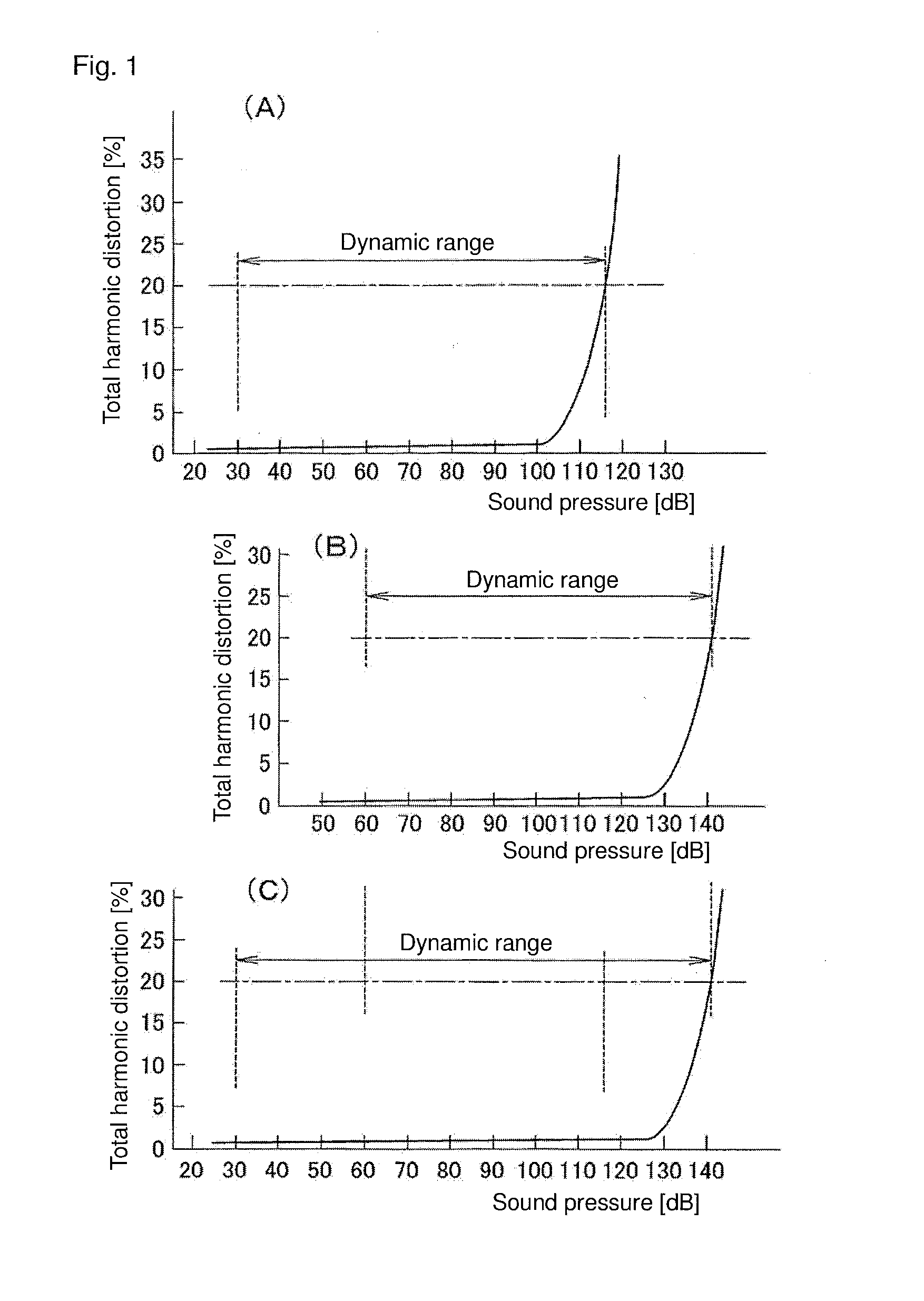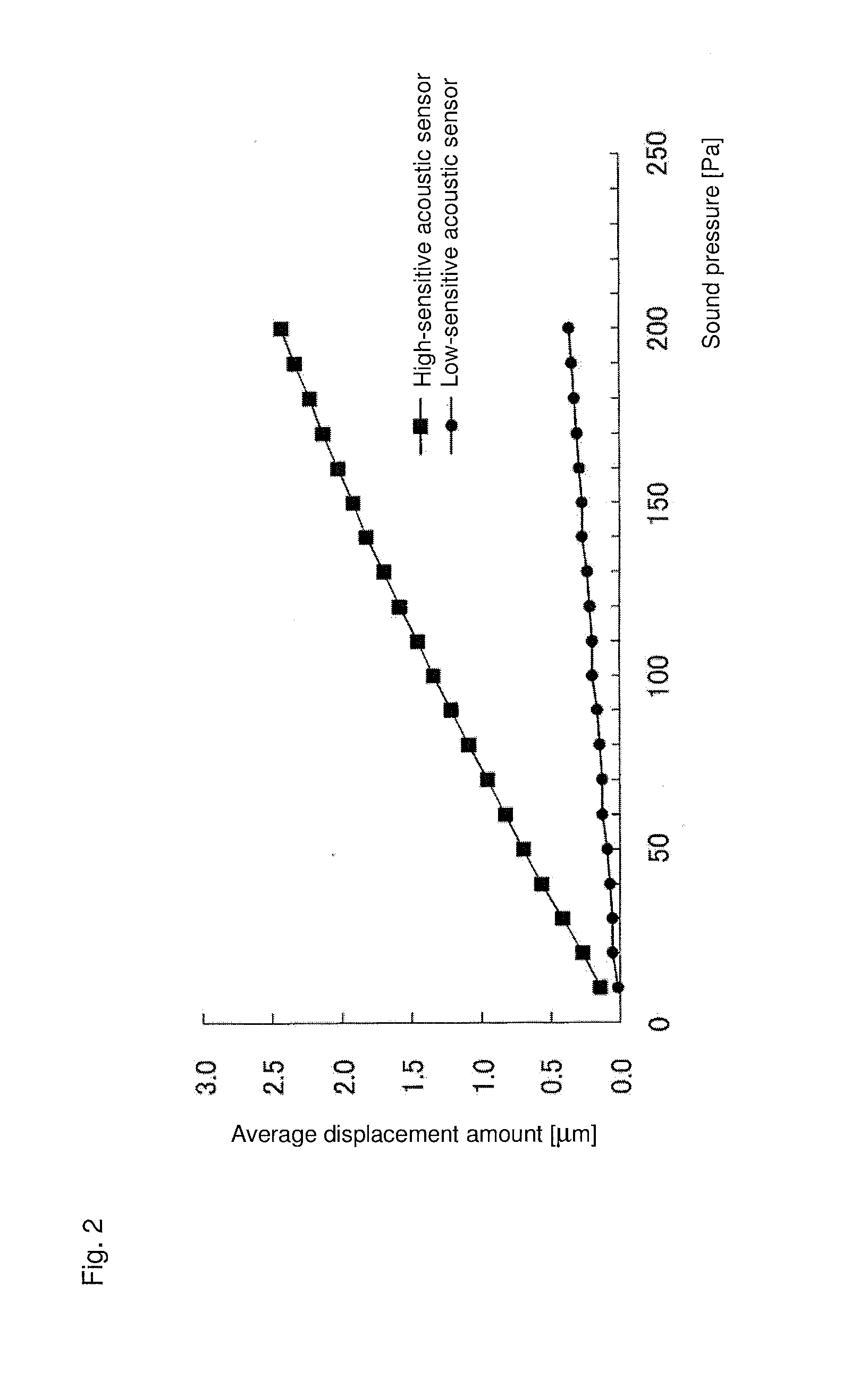Capacitance sensor, acoustic sensor, and microphone
a technology of capacitive sensors and acoustic sensors, applied in the direction of counterbalance, vibration measurement in fluids, solids vibration measurement, etc., can solve the problems of weakness of condenser microphones, reduced size, inferior to mems microphones, etc., to improve the independence of each of the sensing units, wide dynamic range, and low sound pressure
- Summary
- Abstract
- Description
- Claims
- Application Information
AI Technical Summary
Benefits of technology
Problems solved by technology
Method used
Image
Examples
first embodiment
Modification of First Embodiment
[0110]FIG. 16 is a plan view showing an acoustic sensor according to a modification of the first embodiment of the present invention, and shows a state in which the back plate 18, the protecting film 30, and the like are removed. As in the acoustic sensor, the diaphragm 13 is completely separated by the slit 17 into the first diaphragm 13a and the second diaphragm 13b, and the first fixed electrode plate 19a and the second fixed electrode plate 19b are integrally connected to each other with a connection unit 64.
second embodiment
[0111]FIG. 17 is a plan view of an acoustic sensor 71 according to a second embodiment of the present invention. In the acoustic sensor 71, the acoustic holes 24b of the second acoustic sensing unit 23b have a distribution density (number density) lower than that of the acoustic holes 24a of the first acoustic sensing unit 23a. More specifically, an alignment pitch of the acoustic holes 24b is larger than an alignment pitch of the acoustic holes 24a. According to one or more embodiments of the present invention, the alignment pitch of the acoustic holes 24b is twice or more the alignment pitch of the acoustic holes 24a. On the other hand, the hole diameters of the acoustic holes 24a of the first acoustic sensing unit 23a are equal to the hole diameters of the acoustic holes 24b of the second acoustic sensing unit 23b. With respect to points other than the above points, the acoustic sensor 71 has the same structure as that of the acoustic sensor 11 according to the first embodiment, ...
third embodiment
[0115]FIG. 18 is a sectional view of an acoustic sensor 81 according to a third embodiment of the present invention. In the acoustic sensor 81, the thickness of the back plate 18, i.e., a back plate 18b, in the second acoustic sensing unit 23b is larger than the thickness of the back plate 18, i.e., a back plate 18a, in the first acoustic sensing unit 23a. The distribution densities and the hole diameters of the acoustic holes 24a may be equal to the distribution densities and the hole diameters of the acoustic holes 24b. With respect to points other than the above points, the acoustic sensor 71 has the same structure as that of the acoustic sensor 11 according to the first embodiment, and a description thereof will be omitted.
[0116]In the acoustic sensor 81, since the thickness of the back plate 18b is larger than the thickness of the back plate 18a, the rigidity of the back plate 18b in the second acoustic sensing unit 23b is high. As a result, even though the second diaphragm 13b...
PUM
 Login to View More
Login to View More Abstract
Description
Claims
Application Information
 Login to View More
Login to View More - R&D
- Intellectual Property
- Life Sciences
- Materials
- Tech Scout
- Unparalleled Data Quality
- Higher Quality Content
- 60% Fewer Hallucinations
Browse by: Latest US Patents, China's latest patents, Technical Efficacy Thesaurus, Application Domain, Technology Topic, Popular Technical Reports.
© 2025 PatSnap. All rights reserved.Legal|Privacy policy|Modern Slavery Act Transparency Statement|Sitemap|About US| Contact US: help@patsnap.com



